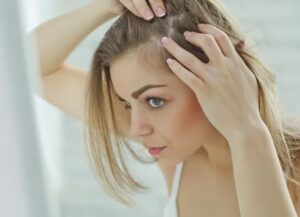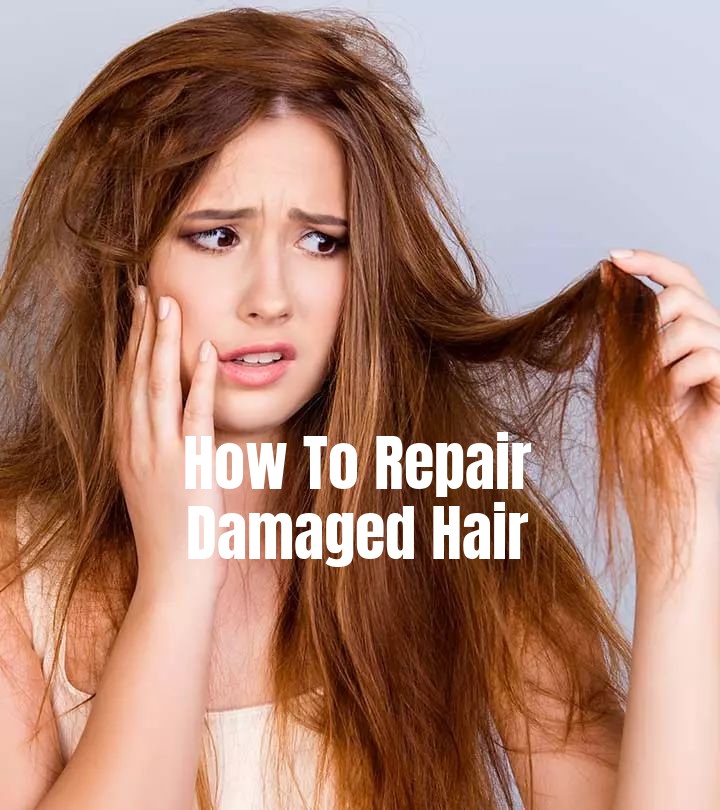
We’ve all been there—dry, brittle, or frizzy hair that seems to have lost its shine and bounce. Whether it’s from heat styling, chemical treatments, or just a bit of neglect, damaged hair can feel like a never-ending battle.
But don’t worry! Repairing your hair isn’t as daunting as it seems. With the right tips, tricks, and a little patience, you can repair damaged hair and you can bring your locks back to life. In this guide, we’ll walk you through everything you need to know to repair your damage —from essential lifestyle changes to clever styling hacks for those tricky in-between days. Let’s explore how to repair damaged hair and you can get back them life again.
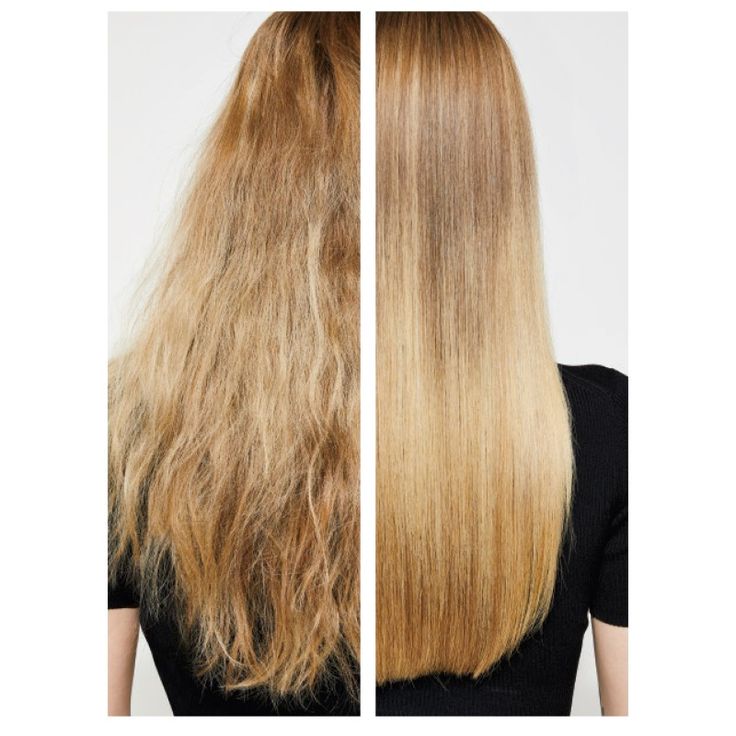
What Causes Hair Damage?
Before we dive into fixing the problem, let’s take a moment to understand what might be causing your hair to look and feel less than its best. Hair damage doesn’t happen overnight; it’s often the result of a combination of factors. Let’s break it down:
Heat Styling
We all love the polished look of straightened or curled hair, but those trusty tools—hairdryers, flat irons, and curling wands—can wreak havoc on your strands if used too often. The high temperatures weaken the hair shaft, making it brittle and prone to snapping. Even worse, repeated heat exposure can cause long-term dryness and split ends. If you’ve ever noticed a distinct fried smell after styling, your hair is likely screaming for a break!
Chemical Treatments
Hair color, highlights, bleaching, perms, and relaxers are game-changers for your style—but they can also be harsh on your hair. These treatments strip away the natural oils that keep your hair healthy and disrupt the protective outer layer, known as the cuticle. The result? Your hair may feel dry, rough, and prone to breakage. While a fresh color or texture change can be fun, it’s essential to understand the toll it takes on your locks.
Environmental Factors
Believe it or not, Mother Nature can be tough on your hair. Prolonged exposure to the sun’s UV rays can dry out your strands and fade your color, while wind tangles and roughens your hair’s surface. Pollution adds another layer of stress, coating your hair with harmful particles that can make it feel grimy and dull. Even something as seemingly harmless as swimming—whether in the ocean or a chlorinated pool—can strip moisture from your hair and leave it damaged.
Also Read: How to Manage Long Hair in Summer
Improper Hair Care Practices
Sometimes, it’s the little habits we don’t even think about that cause the most damage. Brushing wet hair without detangling first? Guilty! Wet hair is more fragile and prone to breakage. Using shampoos loaded with harsh sulfates? These can strip your hair of its natural oils, leaving it parched and unprotected. And skipping conditioner altogether? That’s like leaving the house without sunscreen—your hair needs that extra layer of hydration and protection.
Lifestyle Habits
Believe it or not, your overall lifestyle has a direct impact on your hair’s health. If you’re not eating a balanced diet packed with nutrients like biotin, iron, and omega-3s, your hair might struggle to grow strong and shiny. Stress is another major culprit; it can lead to hair thinning and even hair loss over time. And let’s not forget the importance of sleep. Without enough rest, your body doesn’t get the chance to repair itself—and that includes your hair.
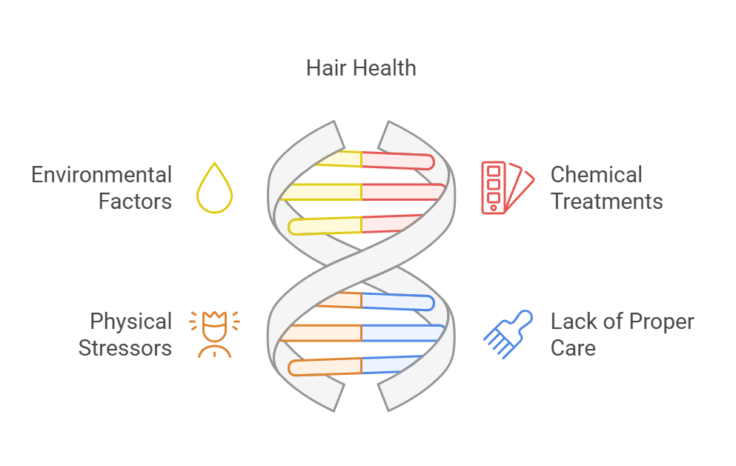
By understanding these common causes of hair damage, you’ll be better equipped to tackle the problem and make choices that keep your locks looking their best.
Signs of Damaged Hair
Not quite sure if your hair is damaged? Don’t worry—it’s not always obvious, but there are some key signs you can look out for. Think of your hair like a plant: when it’s thriving, it’s vibrant and full of life. When it’s struggling, the symptoms start to show. Let’s explore some tell-tale indicators of damaged hair:
Dryness and Frizz
Have you ever run your fingers through your hair and felt like you were touching straw? That’s a classic sign of dryness. Damaged hair struggles to retain moisture, leaving it rough to the touch. And let’s not forget frizz! If your hair seems to have a mind of its own, puffing up in every direction no matter how much you try to tame it, damage could be the culprit.
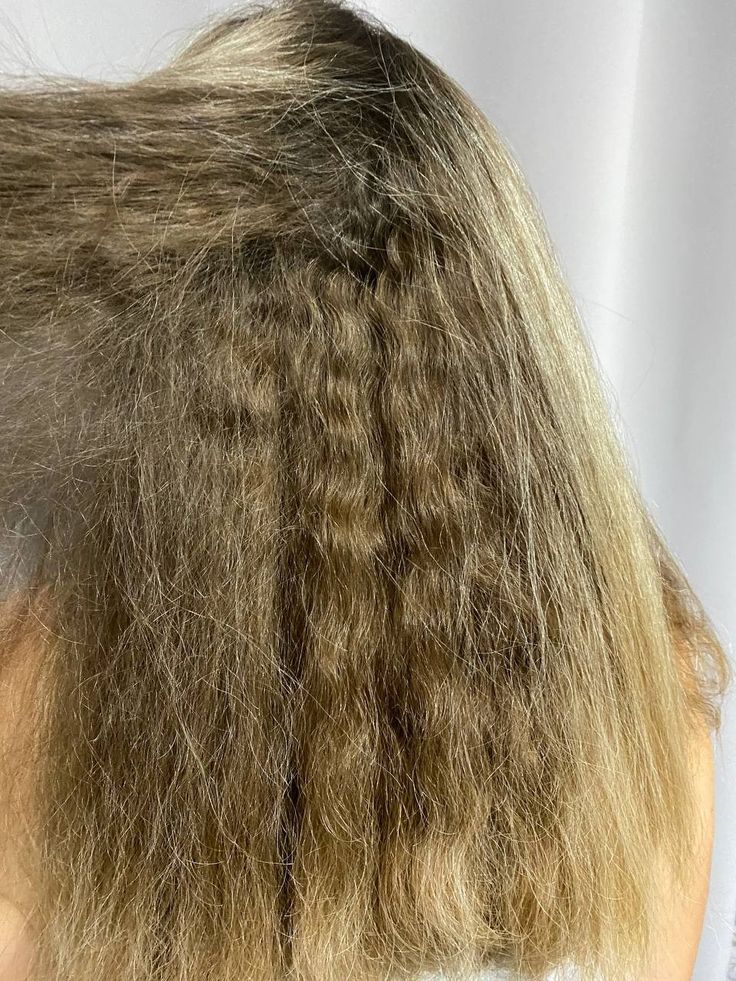
Split Ends
Take a closer look at the tips of your hair. Do they look frayed, like the end of an old rope? Split ends are a common sign of damaged hair. Even with regular trims, they might keep coming back because your strands are weak and vulnerable to breaking apart. Left unchecked, split ends can travel up the hair shaft, making your hair look even more uneven and unhealthy.
Breakage
Does your hair seem shorter in some spots, or do you notice tiny strands snapping off when you brush or style it? Breakage happens when your hair is so weak that it literally breaks off under stress. This can lead to an uneven appearance and make it harder to grow your hair longer. If you’re seeing little pieces of hair on your brush or pillow, it’s a sign your hair might need some extra love.
Dullness
Healthy hair has a natural shine that reflects light beautifully. Damaged hair, on the other hand, often looks flat and lifeless. If your once-glossy locks now look lackluster, it’s a clear signal that your hair is crying out for moisture and nourishment.
Tangles
Does it feel like your hair has turned into a knotty mess overnight? Damaged hair tends to have a rougher texture, which makes it more prone to tangling. Those pesky knots can be a headache to deal with and often lead to even more breakage when you try to brush them out.
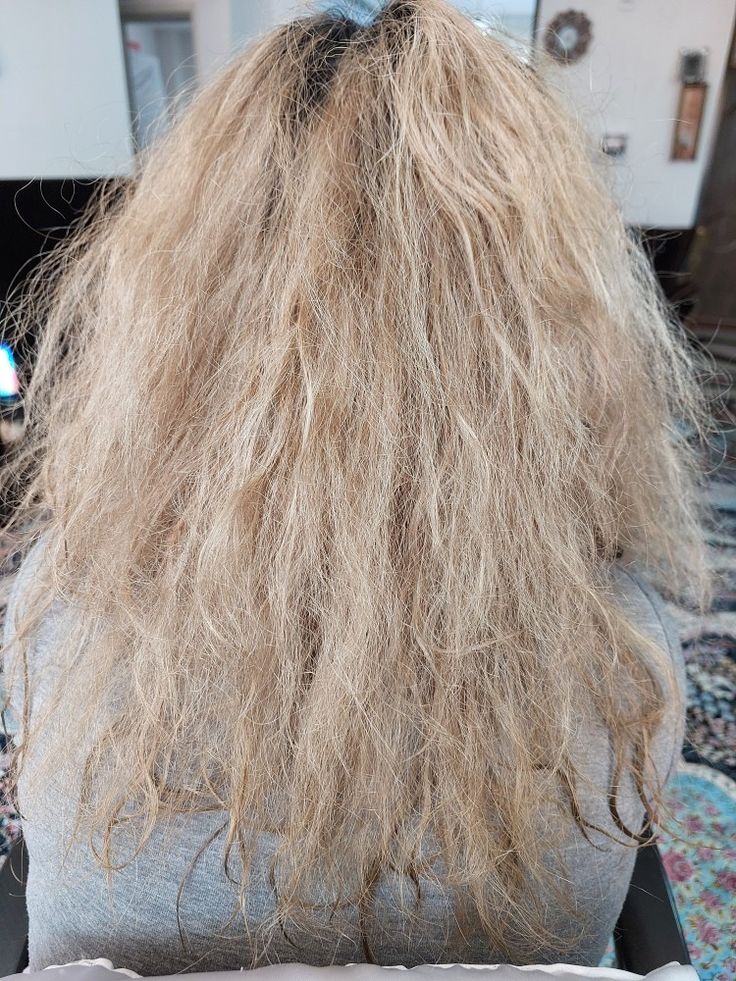
By spotting these signs early, you can take steps to address the damage and prevent it from getting worse. Remember, recognizing the problem is the first step towards finding a solution!
How to Repair Hair Damage
Now that we’ve identified what might be causing your hair damage, it’s time to talk solutions. Don’t worry—to repair damaged hair isn’t too tough if you know how fix it! With the right care and a little patience, you can start restoring your locks to their former glory. Here’s a step-by-step guide to help you along the way:
1. Gentle Cleansing
Let’s start with the basics: shampoo. Many traditional shampoos contain sulfates, which are harsh detergents that strip your hair of its natural oils. This can leave your already-damaged hair feeling even drier and more brittle. Instead, switch to a sulfate-free shampoo that gently cleanses while nourishing your strands. Look for ingredients like argan oil, keratin, or aloe vera, which can help restore moisture and strength.
Pro Tip: Washing your hair every day might feel like a good idea, but it can actually make things worse. Over-washing dehydrates your hair, stripping away the natural oils it needs to stay healthy. Aim to wash your hair 2-3 times a week and use a dry shampoo in between if necessary.
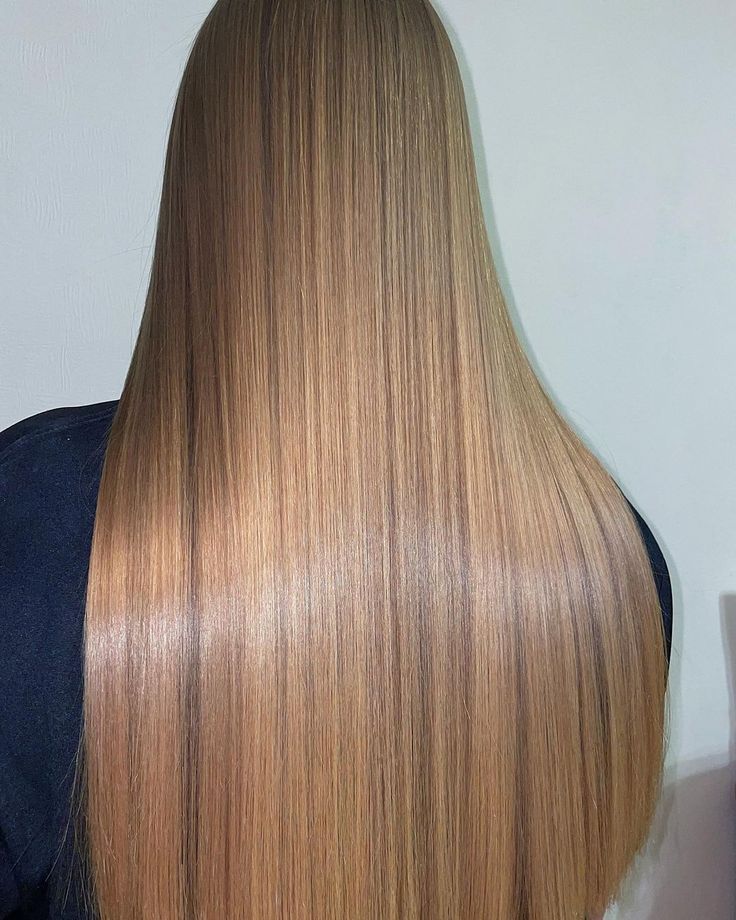
2. Condition Like a Pro
Conditioner is your hair’s best friend, especially if it’s damaged. After shampooing, always follow up with a conditioner that’s designed to hydrate and repair. And if your hair is particularly parched, treat it to a deep conditioning session once a week. Deep conditioners and hair masks are packed with nourishing ingredients that penetrate the hair shaft, giving it a much-needed boost of hydration and repair.
DIY Idea: Want a quick and affordable treatment? Mix equal parts coconut oil and honey to create a hydrating hair mask. Apply it generously to your hair, focusing on the ends, and let it sit for about 30 minutes before rinsing thoroughly. Your hair will thank you!
3. Heat Protection Is Non-Negotiable
We get it—sometimes, you just need your flat iron or curling wand to achieve the perfect look. But without proper protection, these tools can cause serious damage. Always apply a heat protectant spray or cream before using any hot tools. These products act like a shield, minimizing the impact of high temperatures on your hair.
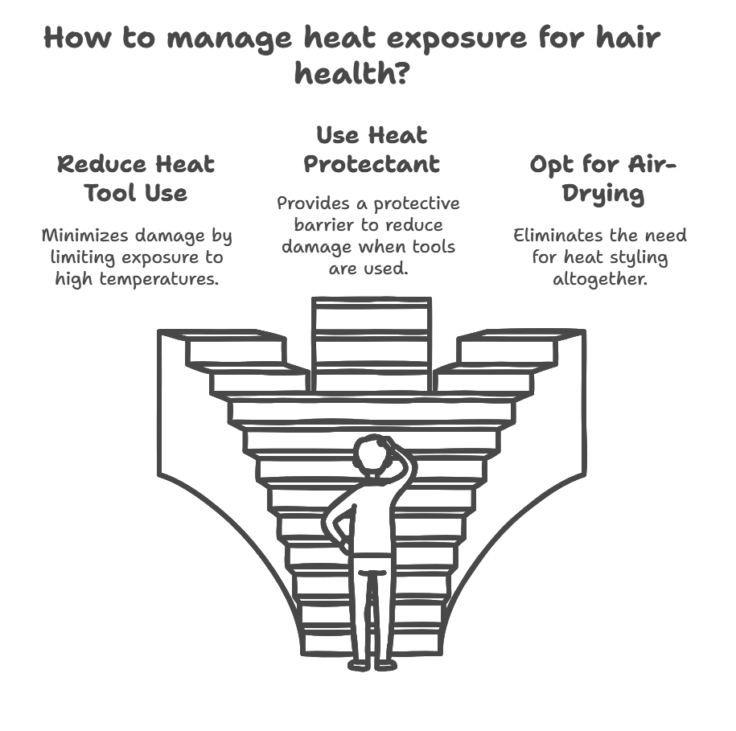
Extra Tip: If you can, try lowering the temperature on your styling tools. High heat isn’t always necessary, and reducing it can make a big difference over time.
4. Trim Regularly
Damaged hair often comes with split ends, and the only real way to get rid of them is with a good trim. Regular trims help prevent split ends from traveling up the hair shaft, which can cause even more damage. Aim to visit your stylist every 6-8 weeks, even if it’s just for a minor trim. Your hair will look and feel healthier as a result.
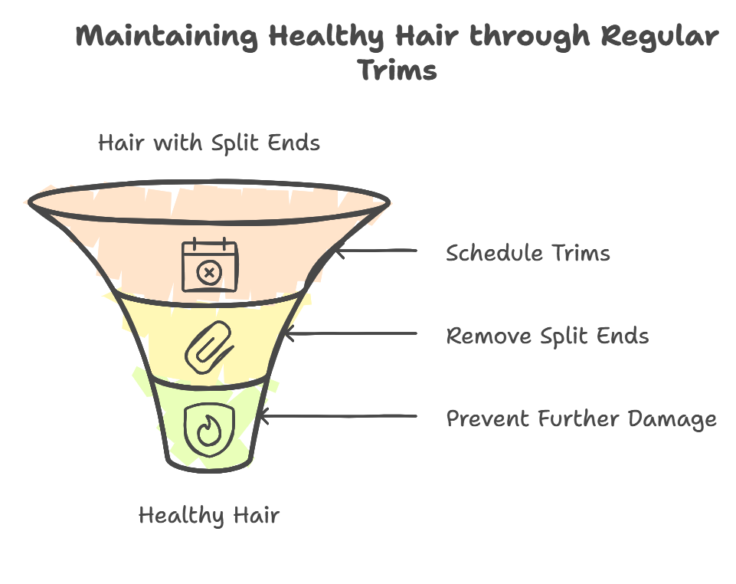
5. Go Easy on Chemical Treatments
Chemical treatments like coloring, bleaching, perming, or relaxing can take a toll on your hair. If your hairs are already damaged, consider giving them a break from these processes for a while. Let your natural hair shine through! If you absolutely must color your hair, opt for gentler options like semi-permanent dyes or low-maintenance highlights. These alternatives are less damaging and can still give you the refreshed look you’re after.
Quick Note: Always follow up chemical treatments with intensive conditioning treatments or protein-based products to help your hair recover.
By incorporating these steps into your routine, you’ll be well on your way to stronger, healthier hair. Remember, it’s all about consistency and giving your hair the love it deserves!
Top Treatments To Repair Damaged Hair
Daily care is essential, but sometimes your hair needs a little extra TLC to recover from damage. That’s where treatments come in. Think of these as your hair’s secret weapons—designed to repair, nourish, and revive even the most stressed-out strands. Here are some of the best treatments to consider:
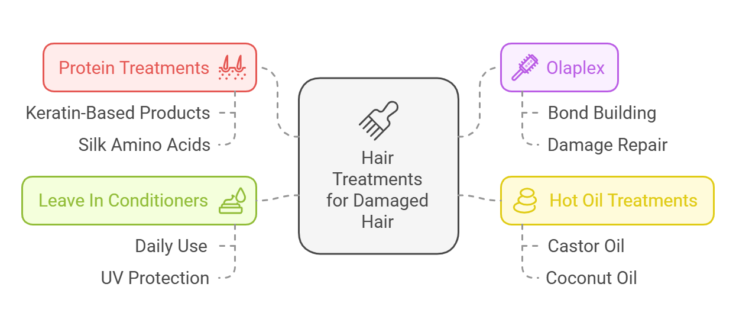
1. Protein Treatments
Protein is the building block of hair, and when your hair is damaged, it loses some of its natural protein structure. That’s where protein treatments come to the rescue. These treatments help to strengthen weak, brittle hair by replenishing lost protein and rebuilding its structure. Look for products with ingredients like hydrolyzed keratin, collagen, or silk proteins. They work by filling in the gaps in your hair’s cuticle, making it smoother, stronger, and less prone to breakage.
How to Use: Apply a protein treatment once every few weeks, depending on the level of damage. Be careful not to overdo it, as too much protein can make your hair feel stiff or brittle. Balance it out with moisturizing treatments to keep your hair happy.
Read More: 11 Secret Daily Hair Moisturization Tips To Must Try
2. Olaplex
If you’ve ever had your hair professionally colored, chances are you’ve heard of Olaplex. This salon-favorite treatment is a game-changer for chemically treated or over-processed hair. Olaplex works by repairing the broken disulfide bonds in your hair—the bonds that give your hair its strength and structure. It doesn’t just coat the hair; it actually repairs it from the inside out.
Pro Tip: You can ask your stylist for an in-salon Olaplex treatment, or try their at-home products, like Olaplex No. 3, to maintain the results between appointments. It’s like giving your hair a science-backed hug!
3. Hot Oil Treatments
There’s a reason hot oil treatments have been a go-to for generations. Warm oils like argan, jojoba, or olive oil are fantastic for deeply penetrating the hair shaft and infusing it with much-needed moisture. These treatments not only add hydration but also leave your hair looking shinier and feeling softer. Plus, they’re a great way to pamper yourself at home!
DIY Idea: Heat a small amount of your chosen oil (but don’t make it too hot—warm is perfect). Apply it generously to your hair, focusing on the mid-lengths and ends. Wrap your hair in a warm towel and let the oil work its magic for 30 minutes before rinsing and shampooing as usual.
Also Read: Try This DIY Hair Care Remedies, Get Healthy Lock
4. Leave-In Conditioners
Think of leave-in conditioners as your hair’s bodyguard. These lightweight products provide continuous hydration throughout the day, helping to detangle, smooth, and protect your hair from external stressors like heat and pollution. They’re especially helpful for taming frizz and adding a touch of shine.
How to Use: After washing your hair, apply a small amount of leave-in conditioner to damp strands. Focus on the ends and mid-lengths, where damage is most likely to occur. You’ll notice your hair feels more manageable and looks healthier instantly.
By incorporating these treatments into your routine, you’ll be giving your damaged hair the extra love and care it needs to recover. The key is to stay consistent and listen to what your hair needs—sometimes it’s protein, sometimes it’s moisture, and sometimes it’s just a little extra protection to keep it on the right track!
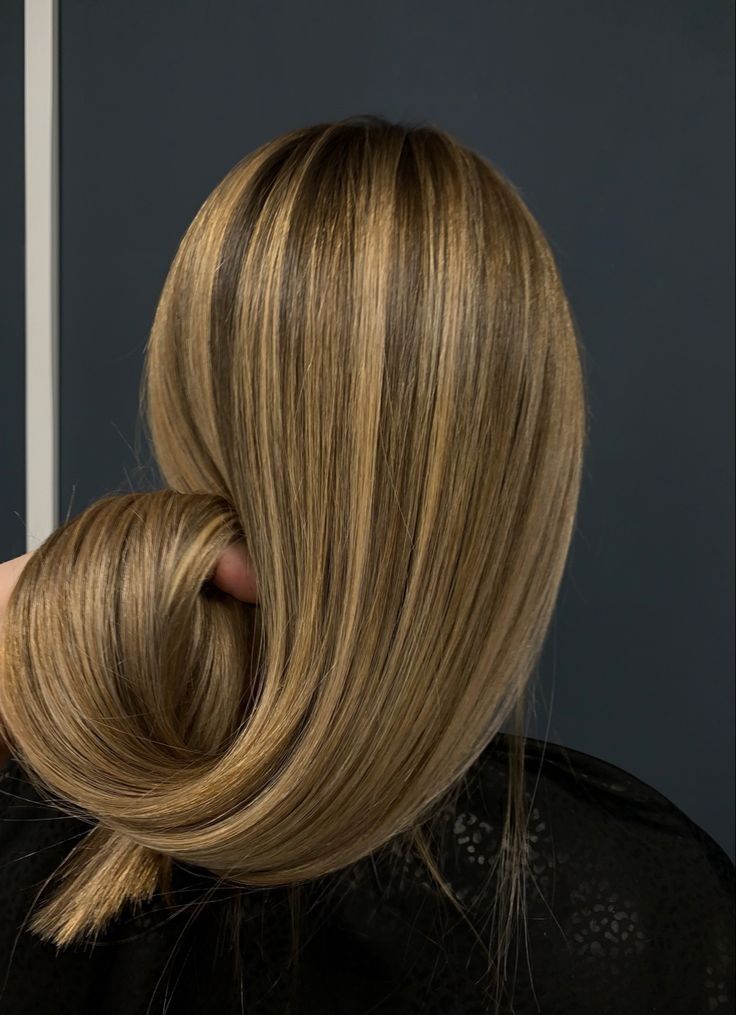
Lifestyle Changes for Healthier Hair
Taking care of your hair starts with taking care of yourself. Here are some simple yet powerful lifestyle changes you can make to help your hair become healthier and stronger:
1. Nourish Your Body with a Balanced Diet
What you eat directly affects the health of your hair. Make sure to include foods packed with biotin (like eggs and nuts), omega-3 fatty acids (found in fish like salmon and flaxseeds), and vitamins A, C, and E (from fruits, vegetables, and healthy fats). These nutrients work together to strengthen your hair, promote growth, and add that much-desired shine.
2. Stay Hydrated
Water isn’t just great for your skin—it’s a game-changer for your hair too! Drinking enough water keeps your scalp healthy and your hair strands moisturized from the inside out. So, aim for at least 8 glasses of water a day to keep your hair hydrated and happy.
3. Keep Stress in Check
Stress can wreak havoc on your hair, leading to thinning and breakage. To combat this, try incorporating relaxation techniques into your routine, like yoga, meditation, or even just taking a few minutes each day to breathe deeply and unwind. Reducing stress isn’t just good for your hair—it’s great for your overall well-being.
4. Get Your Beauty Sleep
Your hair does a lot of its repair and regeneration while you sleep. That’s why getting 7-9 hours of quality rest each night is so important. Consider setting a relaxing bedtime routine to help you wind down, like sipping herbal tea or reading a book. Better sleep equals better hair!
Remember, healthy hair is a reflection of a healthy lifestyle. Small, consistent changes can make a big difference over time!
Quick Fixes for Bad Hair Days
We all have those frustrating hair days when nothing seems to go right. While your hair is on its journey to recovery, here are a few styling tricks to help you breeze through those challenging moments and still look fabulous:
1. Try Braids and Buns for Instant Chic
Bad hair day? No problem! Braids and buns are not only stylish but also practical. They can help conceal any damage or frizz while protecting your ends from further wear and tear. From a sleek low bun to a messy braided crown, these styles are versatile and perfect for any occasion. Plus, they’ll keep your hair tucked away, safe from the elements.
2. Accessorize Like a Pro
When in doubt, accessorize! Headbands, scarves, and hats are lifesavers on tough hair days. A colorful scarf tied into a cute turban or a wide-brimmed hat can cover up problem areas effortlessly while giving your look a fashionable twist. Hair clips and pins can also help tame unruly strands and add a touch of sparkle to your style.
3. Let Dry Shampoo Work Its Magic
Skipping a wash? Dry shampoo to the rescue! A quick spray can absorb excess oil, refresh your roots, and even add some much-needed volume. It’s perfect for reviving limp or greasy hair and works wonders when you’re short on time. Just remember to brush it out thoroughly to avoid any powdery residue, and you’re good to go!
Bad hair days don’t have to ruin your vibe. With these simple fixes, you can keep things under control and focus on letting your natural beauty shine!
Conclusion
It takes time to repair damaged hair, but with the right approach and a bit of TLC, you’ll start seeing results sooner than you think. Remember, it’s all about treating your hair with care—from what you eat to how you style it. While you’re giving your hair time to heal, embrace the quick fixes and don’t forget to enjoy the process. Every small step you take brings you closer to the luscious, healthy hair you deserve. So, start today, and let your hair recovery journey be a confidence boost in itself. You’ve got this!


